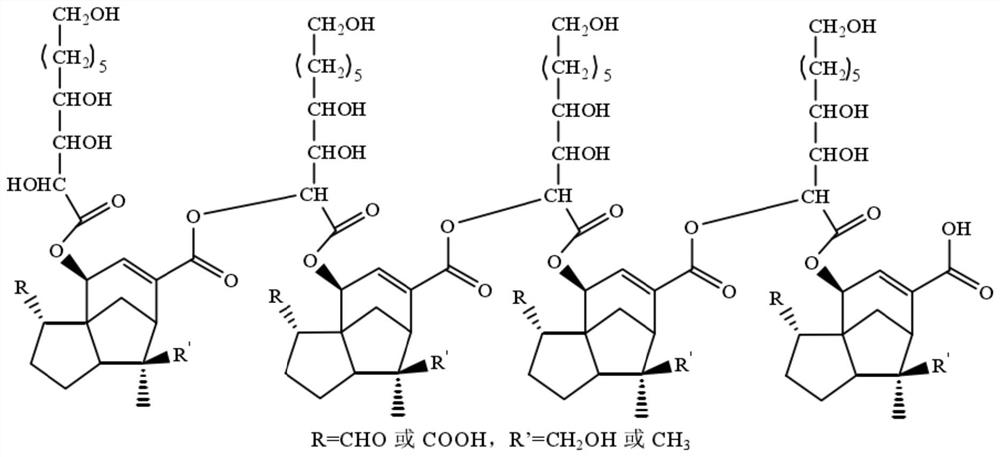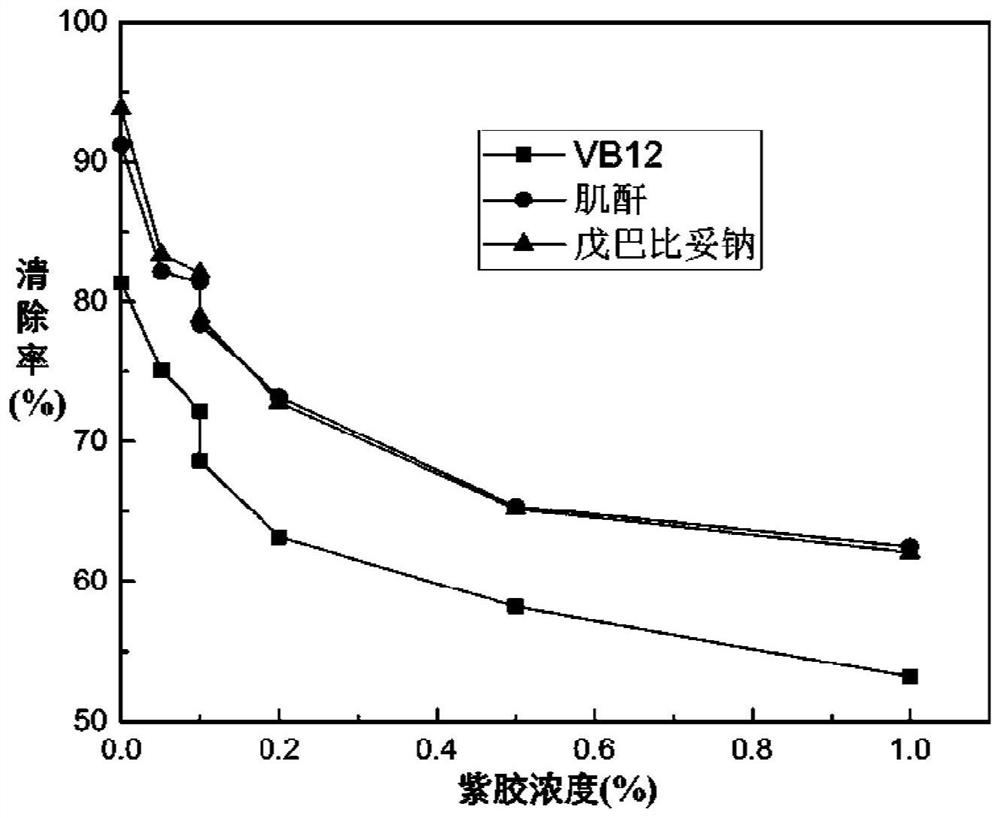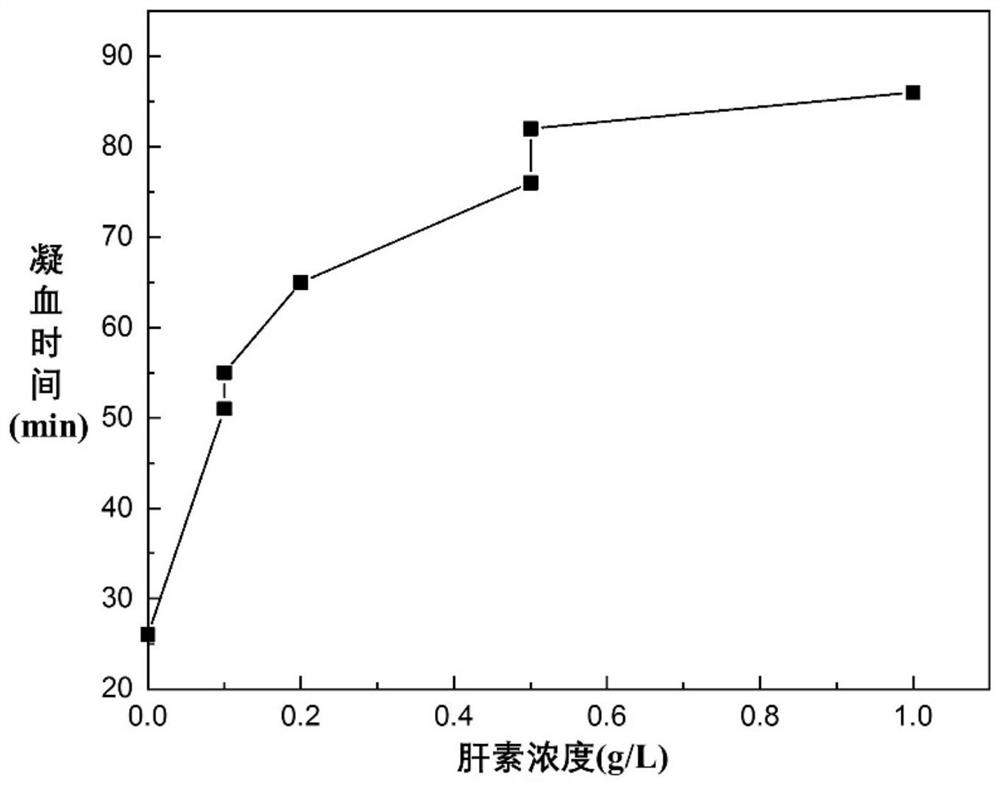Method for modifying and immobilizing heparin on surfaces of blood perfusion resin microspheres and adsorbent prepared thereby
A technology of resin microspheres and surface modification, which is applied in the direction of blood diseases, selective adsorption, chemical instruments and methods, etc., can solve the problems of short coagulation time and insufficient improvement of blood compatibility, so as to avoid coagulation and excellent anticoagulant performance , reduce the effect of coagulation
- Summary
- Abstract
- Description
- Claims
- Application Information
AI Technical Summary
Problems solved by technology
Method used
Image
Examples
Embodiment 1
[0034] Add 1.5g shellac to 150mL ammonia solution with a concentration of 0.5mol / L, and stir to dissolve. Continue to add 150 mg of heparin sodium to prepare 150 mL of ammonia solution containing 1.0% (g / mL) shellac and 1 g / L heparin sodium. Add 100mL hemoperfusion resin microspheres into the solution to soak, and stir slowly for 2 hours, which is conducive to the diffusion of shellac and heparin sodium into the pores of the adsorbent. Then, it was heated to 80° C. in a fume hood until the ammonia solution was completely evaporated to obtain a shellac surface-modified adsorbent immobilized with heparin. Finally, the adsorbent is collected by filtration, washed with purified water, and dried to obtain the finished adsorbent.
Embodiment 2
[0036]Add 0.75g of shellac to 150mL of ammonia solution with a concentration of 0.2mol / L, and stir to dissolve. Continue to add 75 mg of heparin sodium to prepare 150 mL of ammonia solution containing 0.5% (g / mL) shellac and 0.5 g / L heparin sodium. Add 100mL hemoperfusion resin microspheres into the solution to soak, and stir slowly for 1 hour, which is conducive to the diffusion of shellac and heparin sodium into the pores of the adsorbent. Then, it was heated to 80° C. in a fume hood until the ammonia solution was completely evaporated to obtain a shellac surface-modified adsorbent immobilized with heparin. Finally, the adsorbent is collected by filtration, washed with purified water, and dried to obtain the finished adsorbent.
Embodiment 3
[0038] Add 0.30 g of shellac to 150 mL of ammonia solution with a concentration of 0.2 mol / L, and stir to dissolve. Continue to add 75 mg of heparin sodium to prepare 150 mL of ammonia solution containing 0.2% (g / mL) shellac and 0.5 g / L heparin sodium. Add 100mL hemoperfusion resin microspheres into the solution to soak, and stir slowly for 1 hour, which is conducive to the diffusion of shellac and heparin sodium into the pores of the adsorbent. Then, it was heated to 70° C. in a fume hood until the ammonia solution was completely evaporated to obtain a shellac surface-modified adsorbent immobilized with heparin. Finally, the adsorbent is collected by filtration, washed with purified water, and dried to obtain the finished adsorbent.
PUM
| Property | Measurement | Unit |
|---|---|---|
| Concentration | aaaaa | aaaaa |
Abstract
Description
Claims
Application Information
 Login to View More
Login to View More - R&D
- Intellectual Property
- Life Sciences
- Materials
- Tech Scout
- Unparalleled Data Quality
- Higher Quality Content
- 60% Fewer Hallucinations
Browse by: Latest US Patents, China's latest patents, Technical Efficacy Thesaurus, Application Domain, Technology Topic, Popular Technical Reports.
© 2025 PatSnap. All rights reserved.Legal|Privacy policy|Modern Slavery Act Transparency Statement|Sitemap|About US| Contact US: help@patsnap.com



